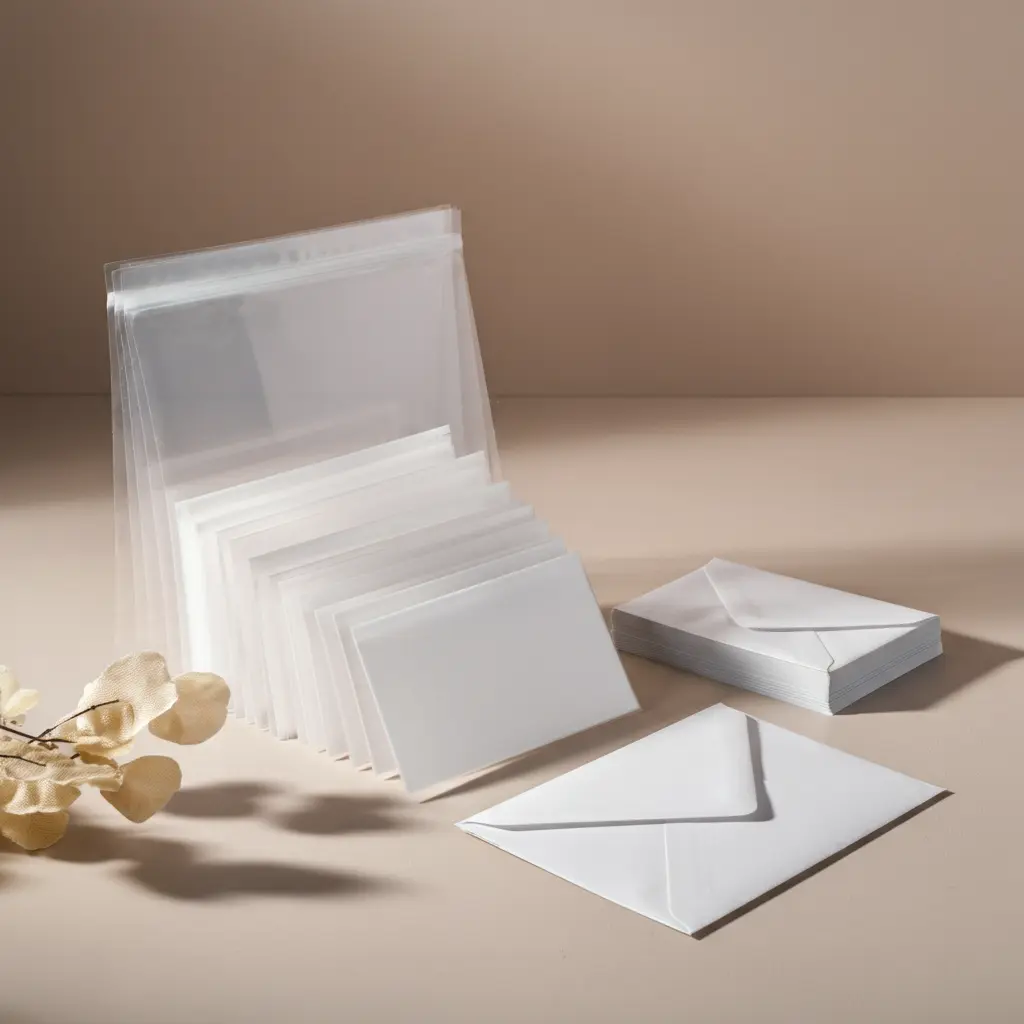Choose a test user to login and take a site tour.





10 minutes, 24 seconds
-67 Views 0 Comments 0 Likes 0 Reviews

Presenting your greeting cards, handmade creations, or important invitations in a professional manner is just as important as the item itself. A crisp, clear cello bag not only protects your work from dust, moisture, and fingerprints but also elevates its perceived value. However, choosing the wrong size can lead to a sloppy, unprofessional look or even damage the contents. This guide will walk you through everything you need to know to select the perfect cello bag size for your cards and envelopes every time.
We will cover how to measure your items correctly, understand bag dimensions, and explore different material options to ensure your products look their best.
Selecting the right cello bag isn’t as simple as matching the dimensions of your card. To achieve a snug, professional fit, you need to account for the thickness of your items and allow for a small amount of wiggle room. A bag that is too tight can be difficult to use and may bend your card, while one that is too loose will look untidy.
The key is to find a bag that is slightly larger than the item it will hold. As a general rule, adding a few millimetres to both the width and height of your card or envelope will give you the ideal bag dimensions.
Accurate measurements are the foundation of a perfect fit. Before you start browsing for bags, take the time to measure your items correctly.
The stationery industry uses standard sizing conventions, which can make finding the right cello bag much simpler. Many cello bags are manufactured specifically to fit these common envelope sizes. Familiarising yourself with these can save you a lot of time.
Here are some of the most common sizes and the cello bags designed to fit them:
By searching for a cello bag designed for your specific envelope size (e.g., “Cello bag for C5 envelope”), you can quickly find a product that is guaranteed to fit.
Beyond size, the material of the bag itself is an important consideration. The type of film affects the bag’s clarity, durability, and environmental impact.
Often referred to as ‘poly bags‘, these are the industry standard. Polypropylene is a type of plastic prized for its exceptional clarity, which allows the design and colours of your card to shine through without distortion. These bags are also strong, flexible, and resistant to tearing, providing excellent protection for your products during handling and display. Most polypropylene bags come with a peel-and-seal strip for quick and secure closure.
For those seeking an eco-friendly alternative, compostable cello bags are an excellent choice. Made from plant-based materials like Nativia® film, these bags are designed to break down under industrial composting conditions. They offer great transparency and product protection, similar to traditional polypropylene bags, but with the added benefit of being kinder to the planet. Many compostable bags feature printed messages to inform the end-user of their eco-friendly properties, adding value to your product.
With the right size and material selected, you are well on your way to a professional finish. Keep these final tips in mind:
Choosing the right cello bag is a small detail that makes a big difference. By carefully measuring your items, understanding standard sizes, and selecting the appropriate material, you can ensure your cards and creations are presented beautifully and protected effectively.
Q: What are cello bags made from?
A: The term “cello bag” originally referred to cellophane, but nowadays most are made from biaxially-oriented polypropylene (BOPP). This material provides excellent clarity and durability. Eco-friendly options are also available, typically made from plant-based, compostable films such as polylactic acid (PLA).
Q: How do I measure for a cello bag?
A: To measure for a cello bag, start by placing your card or envelope on a flat surface. Measure its width and height. Then, check its depth, particularly if it includes any embellishments. Add around 2-4mm to the width and height measurements to ensure the item slides in easily and fits snugly without being too tight.
Q: Are cello bags recyclable?
A: Polypropylene cello bags can technically be recycled, but you’ll need to check with your local recycling facility, as not all centres accept soft plastics. Compostable cello bags aren’t suitable for recycling and should be put into an industrial composting bin where available.
Q: What is the difference between a C5 and C6 envelope?
A: C5 and C6 are standard international paper sizes. A C6 envelope measures 114mm x 162mm and is designed to hold an A6 card. A C5 envelope is larger, measuring 162mm x 229mm, and is made to hold an A5 card.

Share this page with your family and friends.